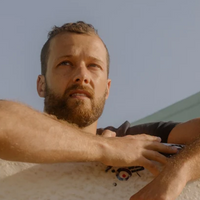“Goals are about the results you want to achieve. Systems are about the processes that lead to those results.”
If I could go back in time and have a conversation with my younger, more spastic, self, I would relay two messages:
One: Mental toughness is defined as persistence, not intensity.
Two: Goals are for losers. Systems are for winners.
Perhaps as I was tucking myself back into the DeLorean and starting to gun it to 88 miles per hour, I would also shout, “ … and stop sagging your pants, kid. You’re not fooling anyone!” But the first two points would be my primary reasons for the voyage. I learned both of them from James Clear, the author of Atomic Habits: An Easy and Proven Way to Build Good Habits and Break Bad Ones. It is quickly becoming one of my most gifted books, and I am here to shout its praise from this quaint internet rooftop.
An unflattering but honest metaphor for my life might be the bright candle that burns too quickly. Growing up, I gripped tightly to the belief that intensity and a cavalier attitude toward risk were my greatest assets. I had high levels of pain tolerance and low levels of self-preservation. This combustible mix allowed me to hurl myself down staircases on a skateboard until my hip was purple, bomb ad nauseam at amateur stand-up comedy, and ride a horse at a Mexican rodeo using wadded-up toilet paper as a mouthguard. But after four fractured wrists and an omnipresent feeling of insufficiency, I conceded that perhaps there was an approach to learning that doesn’t result in broken arms and burnout.
The question was simple: Can I learn more while suffering less?
Atomic Habits answered this question. The human brain has evolved to make decisions that require the least amount of effort, so if you want to build a new habit, and stick with it, the smartest approach is to trick your brain into thinking that it’s easy. Clear uses a technique called “The Two Minute Rule,” which he explains as follows:
When you start a new habit, it should take less than two minutes to do. You’ll find that nearly any habit can be scaled down into a two-minute version: “Read before bed each night” becomes “Read one page.” “Do thirty minutes of yoga” becomes “Take out my yoga mat.” “Study for class” becomes “Open my notes.” “Fold the laundry” becomes “Fold one pair of socks.” “Run three miles” becomes “Tie my running shoes.” … To get a habit to stick you need to feel immediately successful—even if it’s in a small way
A friend once told me, “Kyle, your problem is that you think that just because it’s hard, that automatically means that it’s good.” While the ability to suffer does have its place during excruciating events such as passing a kidney stone, SEAL training, or holidays with the in-laws, that doesn’t mean we need to seek it out. Our blind love of suffering seems to be a uniquely American idea, and I can’t help but wonder if our culture overvalues bombastic intensity and undervalues quiet consistency. If you can get 1 percent better each day for one year, you’ll end up 37 times better by the end of the year.
A lot of us are trying to read more. It’s a worthy intention as it seems to be the single biggest difference between thoughtfulness and ignorance. Compared to Instagram, though, reading can feel grueling. Clear argues that long-term habit-building has more to do with your environment and less to do with motivation. By engineering an environment where good decisions are easy, it removes the need to “feel motivated.” Clear offers another technique called habit stacking. Think of a habit you enjoy and carry out every day—making breakfast, for example. By stacking the task of “read one page” right before you make breakfast, your mind will begin to associate reading with a more pleasurable experience. Apply this mental jujitsu enough times and pretty soon you’ll be flipping an omelet while mowing through The Odyssey.
Conversely, if you want to stop acting out bad habits, create barriers in your environment. Checking Instagram like a crack addict was a bad habit of mine, but I cut my use in half by creating one simple barrier to entry: Uninstall. That’s right, by forcing myself to reinstall the app every time I want to use Instagram—an act that takes about 60 seconds—it gives me just enough time to admit that I don’t actually want to check Instagram. I’m just grasping for a way to procrastinate like a drowning victim grasps for a life preserver, when, really, I need to take a step back and learn to swim.
It turns out that a lot of what we do is identity-driven and the phrases you use to describe yourself are of great importance. Clear has his readers consider the smoker:
Imagine two people resisting a cigarette. When offered a smoke, the first person says, “No thanks. I’m trying to quit.” It sounds like a reasonable response, but this person still believes they are a smoker who is trying to be something else. They are hoping their behavior will change while carrying around the same beliefs.
The second person declines by saying, “No thanks. I’m not a smoker.” It’s a small difference, but this statement signals a shift in identity. Smoking was part of their former life, not their current one. They no longer identify as someone who smokes.
Goals can be helpful in the way that they can set you on course, but ultimately we fall back on our systems. If you’re setting off on a sailing voyage, the goal is the destination, but the systems are the sails, rudder, steering wheel and everything else that will get you from Point A to Point B.
By simply applying the principles above of starting small, engineering your environment to your benefit, choosing the words you use to describe yourself with precision, and focusing on systems rather than goals, you will begin to look at every problem you face through a more strategic prism, one that can help you dance through the day with a little more grace and less burnout.
By Kyle Thiermann
Follow Kyle on Instagram




